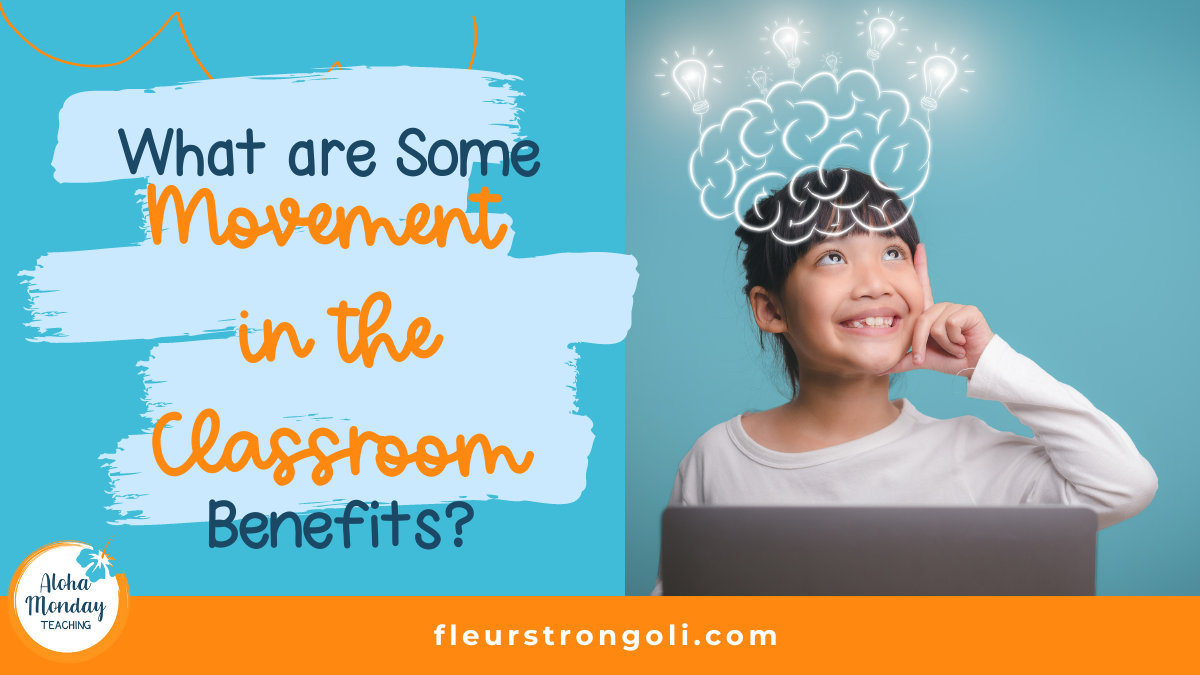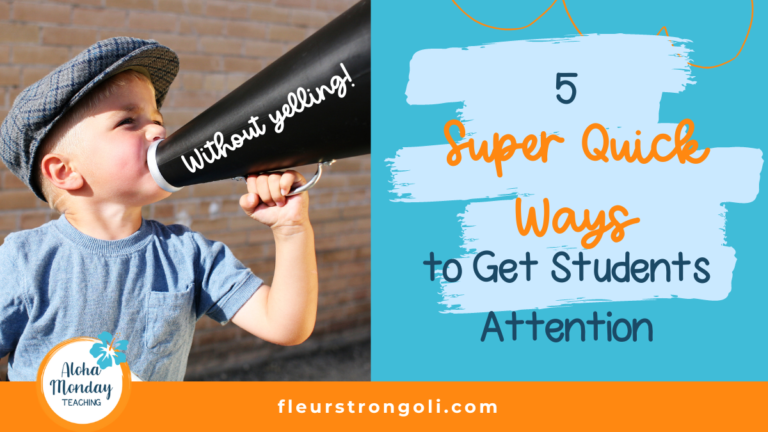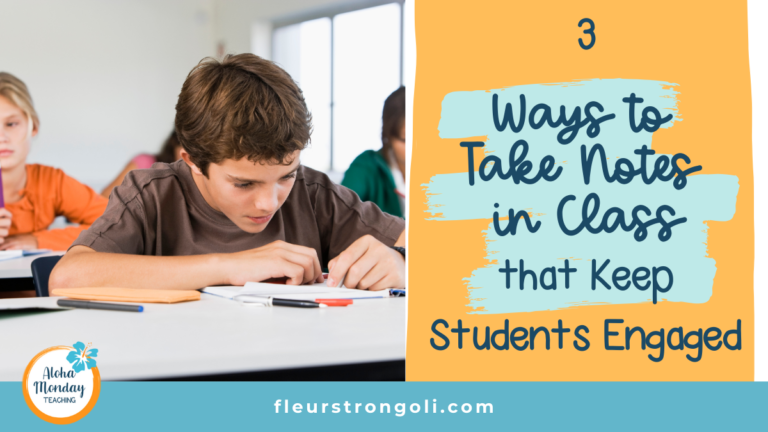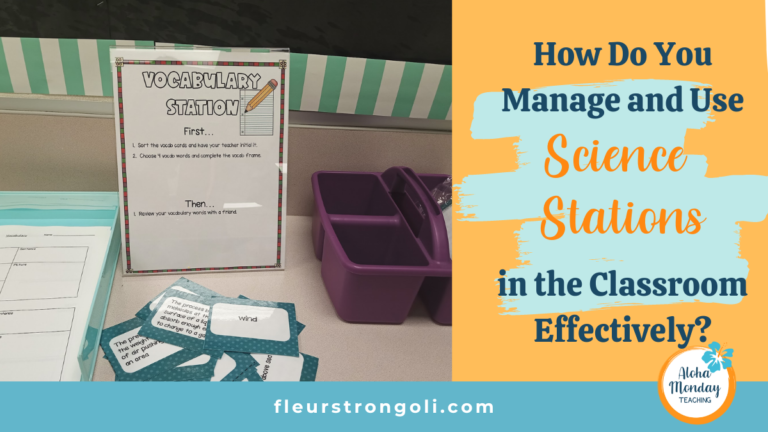What Are Some Movement in the Classroom Benefits?
Movement in the classroom benefits students and teachers! As Science teachers, we need to make sure our students move throughout our class period. Let’s explore how it benefits the brain and learning. You’ll also see how simple it is to incorporate movement into your day!
In this post
I will talk about why most classrooms need more movement and how movement in the classroom benefits our students’ brains. I will share four ideas that are easy to incorporate into your class period on any day.
Be sure to get your free guide- Plan Your Science Unit in LESS Time with 3 Simple Steps! This will help you plan those movement activities into your lessons.
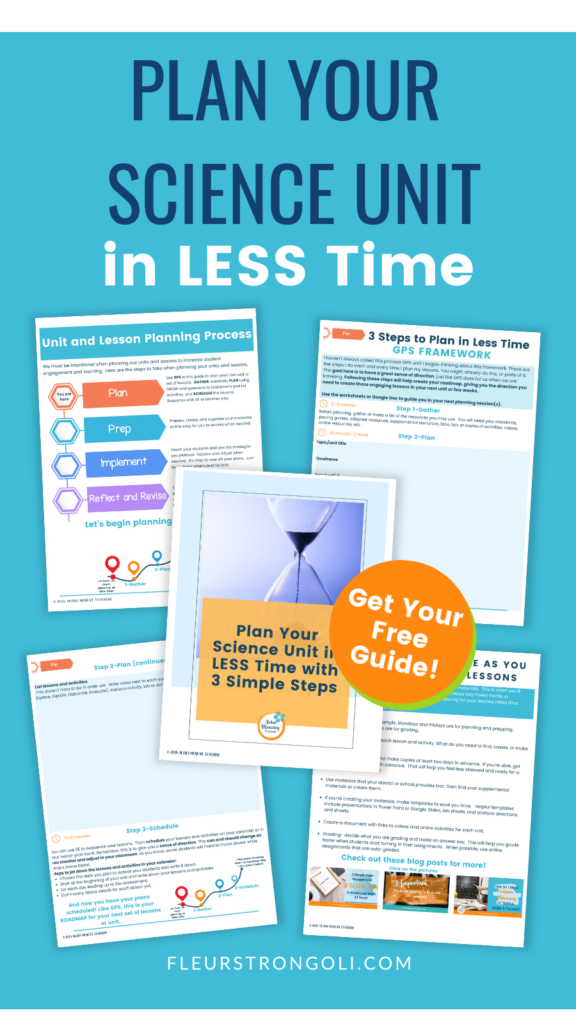
Disclosure: This post contains some affiliate links for your convenience. As an Amazon Associate I earn from qualifying purchases with no cost to you.
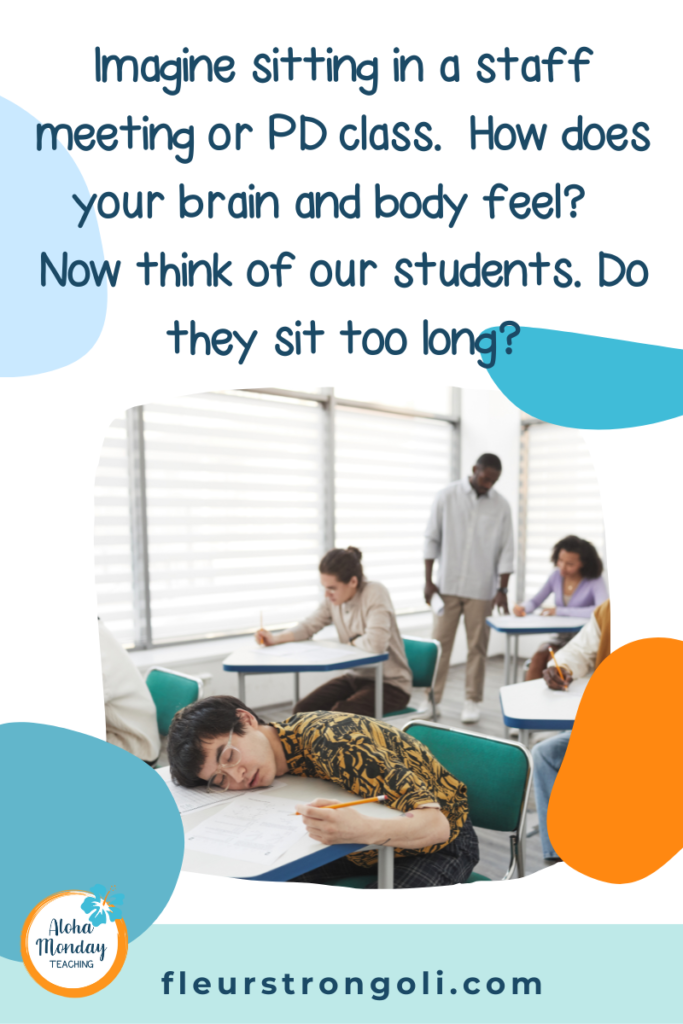
Most Classrooms Need More Movement
First, I want you to think about something. You’re sitting in a staff meeting or a professional development class. How well are you actually paying attention after sitting for too long?
If you’re like most people, or like me, you need to get moving to focus better on what’s being said. That’s how it is for our kids.
Now imagine your classroom on any given day, or on a note-taking day. How long are the kids sitting? If they are sitting too long, do you think they are really focused on what is being said?
For Science teachers, we are pretty lucky because most days our kids are up and moving. But I know on note-taking days in my classroom, I have to incorporate intentional brain breaks so they don’t sit still too long.
But, unfortunately, most classrooms in our schools look like this- students sitting all class period. Which is why we need to incorporate more movement.
You can read more about engaging students in this blog post.
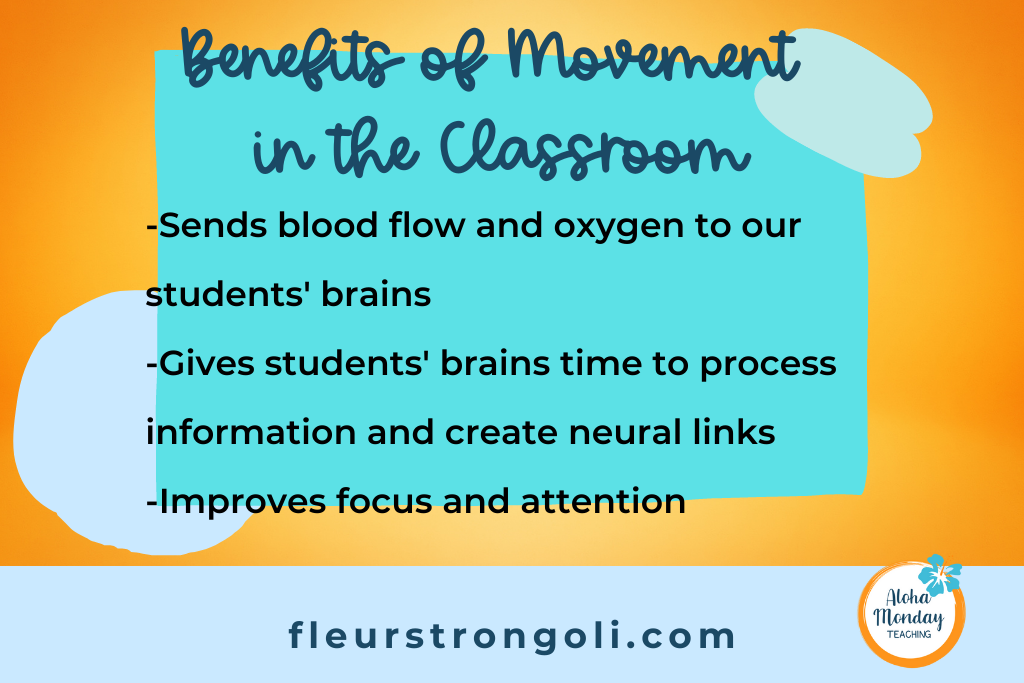
Movement in the Classroom Benefits
The main thing that movement in the classroom benefits is the brain. When our bodies move, we are sending more blood flow and oxygen to our brains. This allows our brains to process more and think better. It helps us focus.
It is recommended for middle schoolers to have a movement or brain break every 8-12 minutes during instruction. We might be able to get away with 20 minutes, but then we probably lost our students who already struggle with focus.
When we offer movement breaks, the brain can take some time to process what we just taught them. Their brains (and ours) need that time to make any neural connections for learning to take place.
So how do we do this without feeling worried that we won’t be able to get them back on track?
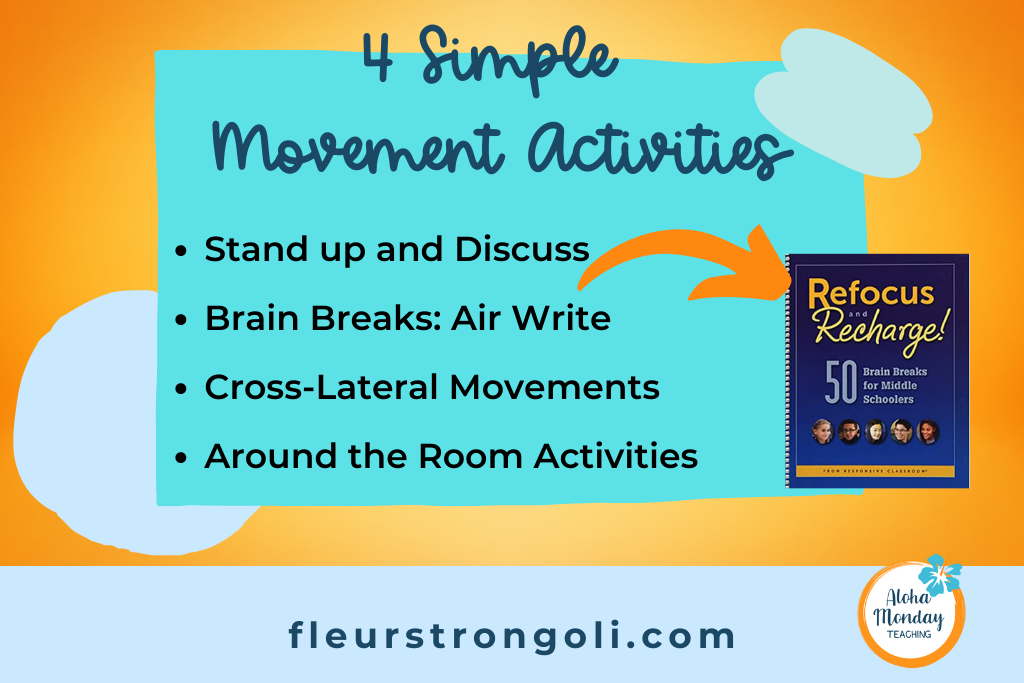
What are movement activities?
Here are a few ideas of simple movement activities we can do in our classrooms. These can be done as often as you need to.
And if you’re like me, and need to intentionally place these in your lessons so you don’t forget, then you NEED to check out Brain Based Strategies. These are slides you can insert into your Powerpoints so students are getting that break every 8-12 minutes.

Stand Up to Respond and Discuss
Throughout my lesson, I give examples and ask questions so students can stand to answer.
You can simply have your students stand up to discuss what they are learning. This is an easy way to get them off their seats and blood flowing through their bodies to their brains.
Brain Breaks such as Air Write
This is from another one of my favorite books Refocus and Recharge: 50 Brain Breaks for Middle Schoolers. You can use ANY of these brain breaks in your classroom. Air Write is one of my favorites because it is so simple and I can do this with every single unit I teach. Students stand up and using their fingers, they write vocabulary words in the air.
Cross Lateral Movements
To get the brain engaged and the body moving, you can do cross lateral movements with your students. Simple things like, “Touch your right shoulder with your left hand.” When they cross the mid-line, it engages both hemispheres of the brain.
If you think about it, video games are very good at this, which partly explains why kids are so engaged. You know- those Fortnite dances (floss, etc.) They all cross the mid-line, engaging kids’ brains. We just need to use those ideas in our classrooms!
Around the Room Activities
You can get students up and moving by having them work around the room. There are many ways to do this. You can use stations and they travel through each station during the class period. Students can complete a scavenger hunt.
You can use an Around the Room activity like posting speed and acceleration problems in your Force and Motion Unit or The Rock Cycle Scramble. Here’s a video that shows you about the Rock Cycle Scramble.
Wrap Up
Movement in the classroom benefits our students’ brains and learning. We talked about why it’s important and how it helps the brain. I also shared four ideas that are simple to incorporate into your daily routine. Stand up and discuss, Air Write, Cross Lateral Movements, and Around the Room Activities.
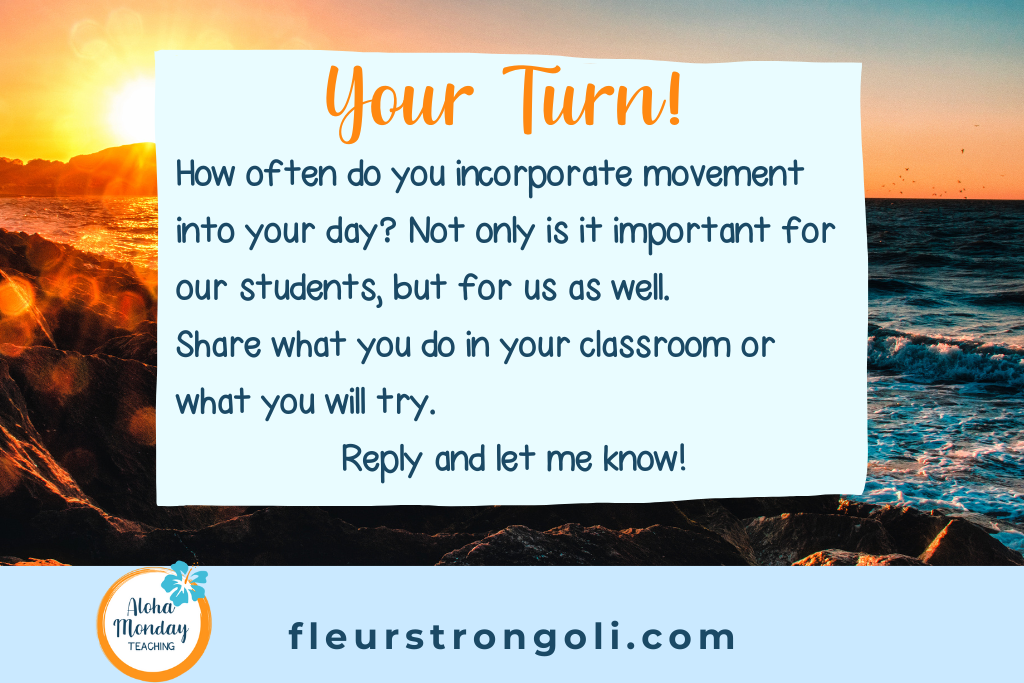
Your Turn
How often do you incorporate movement into your day? Not only is it important for our students, but for us as well. Share what you do in your classroom or what you will try. Reply and let me know!
Read More/Links
Blog post: 3 Important Steps to Engage Students in Lessons
YouTube video: 3 Important Steps to Engage Students in Lessons
Rock Cycle Scramble on TpT
Video about The Rock Cycle Scramble
Worksheets on Force and Motion on TpT (Includes the around the room activity)

